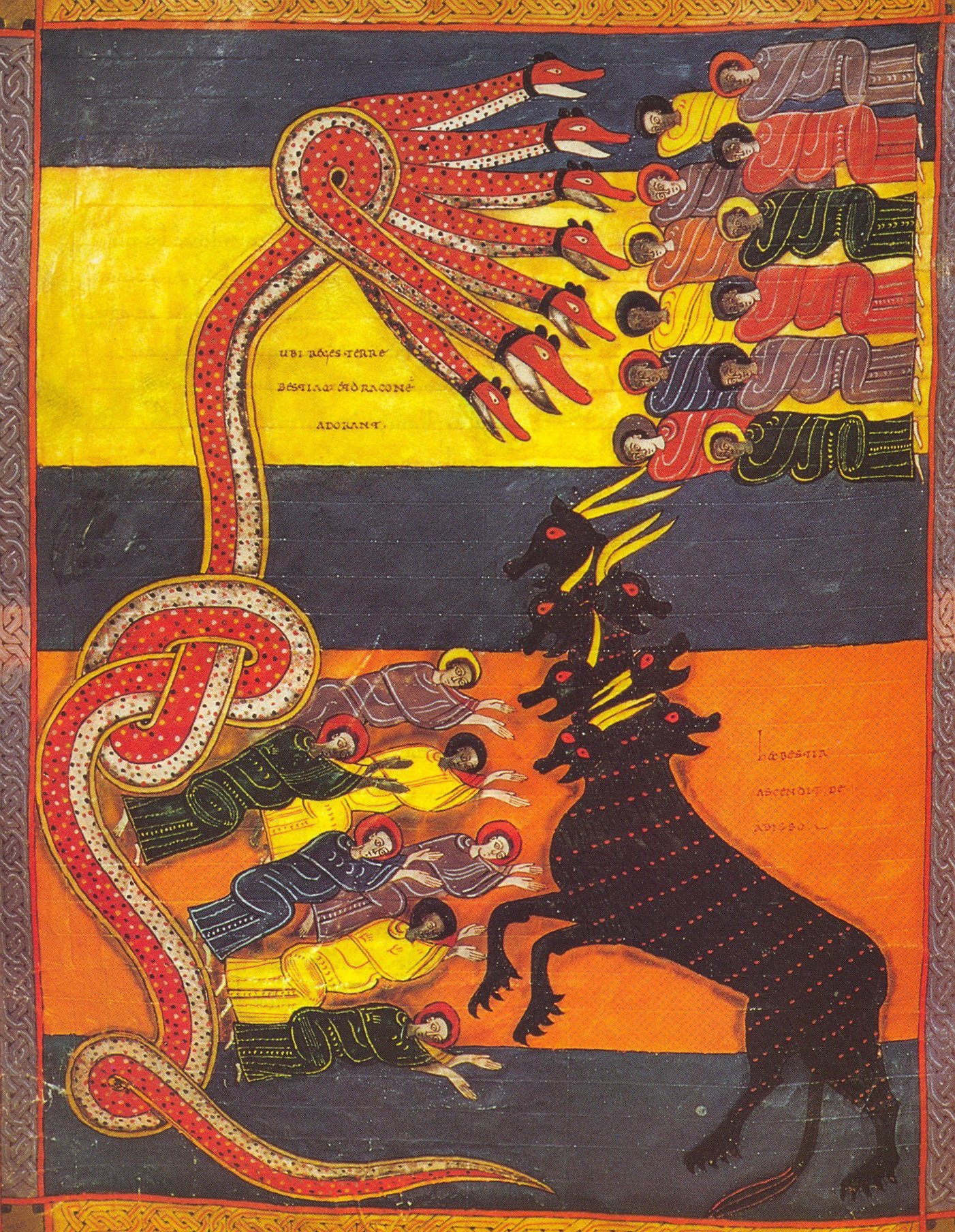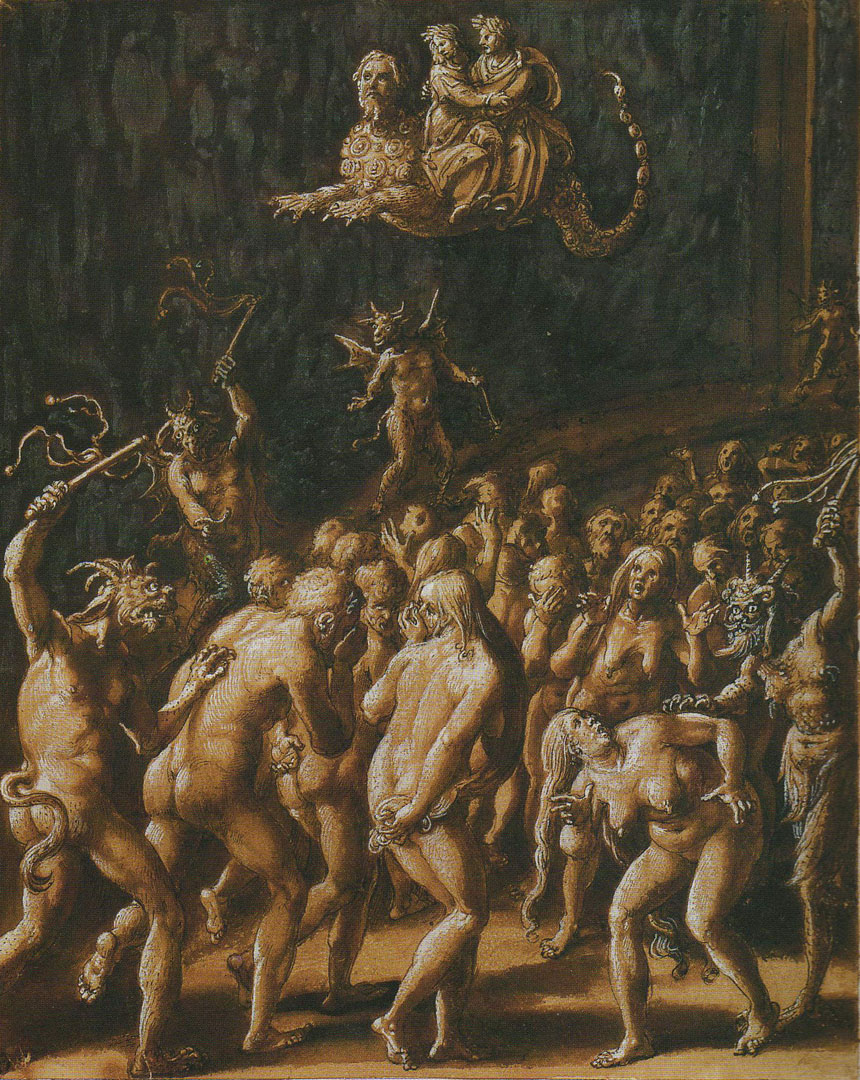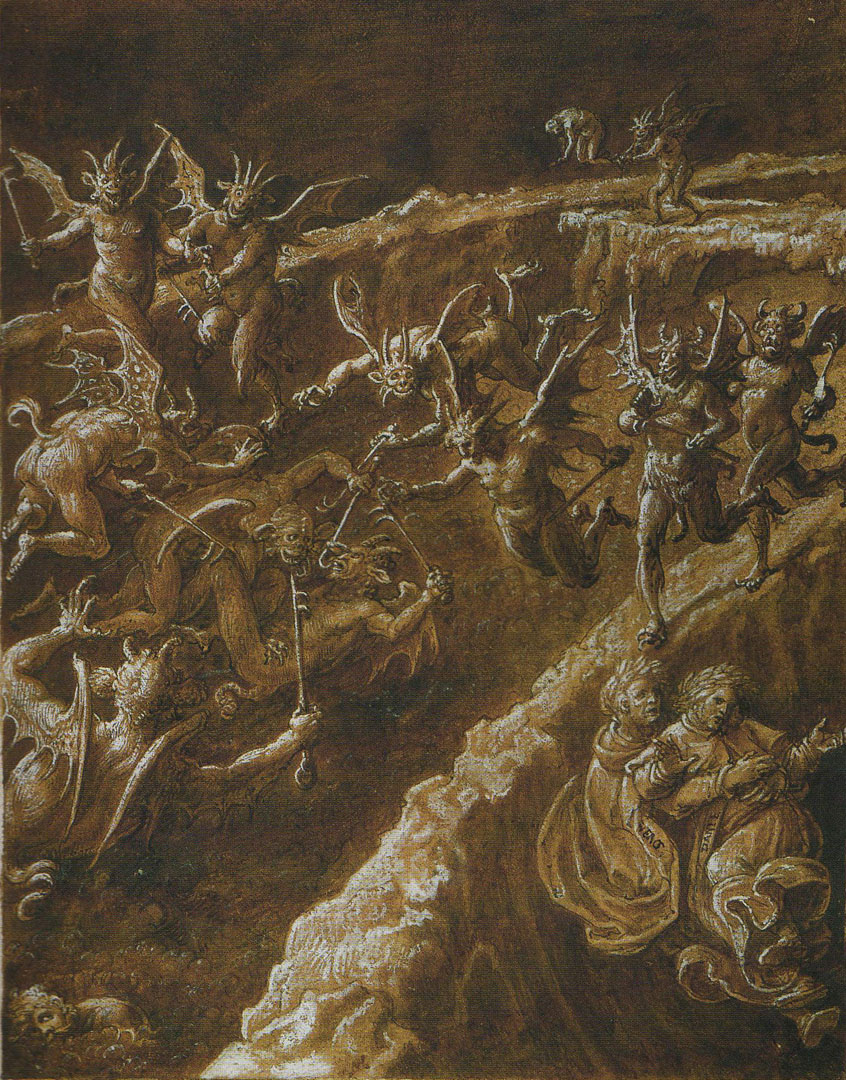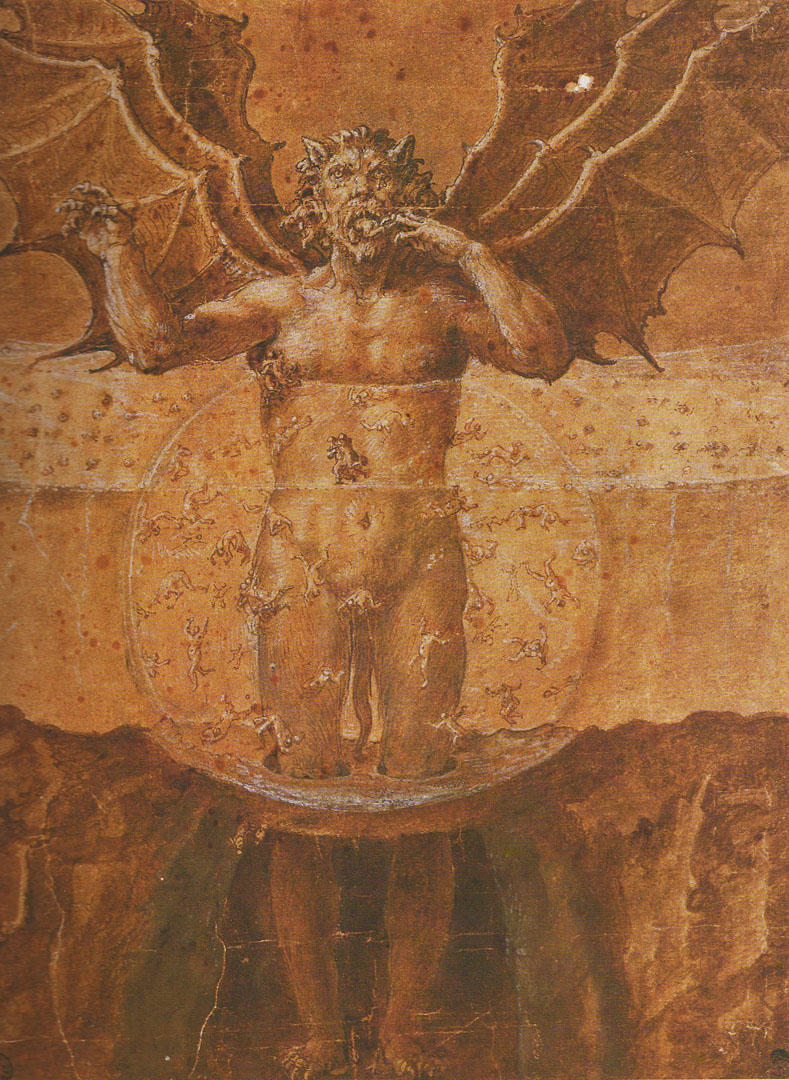Beatus of Liébana
Artist - Oveco (pour l'abbé Semporius)
Title - The fifth trumpet: the plague of locusts, (Apocalypse IX) c.970.

Artist - "fr:"Facundus, pour Ferdinand Ier de Castille et Leon et la reine Sancha
Title - The Dragon gives his power to the Beast, (Apocalypse XIII) c. 1047.
"Saint Beatus of Liébana (c. 730 - c. 800) was a monk, theologian and geographer from the Kingdom of Asturias, in northern Spain, who worked and lived in the Picos de Europa mountains of the region of Liébana, in what is now Cantabria and his feast day is February 19.
He created an important Christian cultural and religious focal point during the 8th century. He corresponded with Alcuin, and took part in the Adoptionist controversy, criticizing the views of Felix of Urgel and Elipandus of Toledo. As confessor to Adosinda, wife of Silo of Asturias, and as the master of Alcuin and Etherius of Osma, Beatus exercised wide influence. He is best remembered today as the author of the Commentary on the Apocalypse, written in 776, then revised in 784 and again in 786. This commentary was popular during the Middle Ages and survives in at least 34 manuscripts (usually called a beatus) from the 10th through the 16th centuries. At least 26 of those manuscripts contain illuminations. Though Beatus may have written his commentaries as a response to Adoptionism in Spain of the late 700s, many believe that the book's popularity in monasteries stemmed from the presence in Spain of Islam, which the Christian religious believed to represent the Antichrist. Not all of the manuscripts are complete, and some exist only in fragmentary form. Twenty-six of these manuscripts are lavishly decorated in the Mozarabic, Romanesque, or Gothic style of illumination."
- quote and images taken from an article posted at
Wikipedia.

Hell, taken from " Codex of the Monastery of Santo Domingo de Silos" an illuminated copy of Beatus of Liébana's Commentary on the Apocalypse according to St John. A detailed description of this illumination can be found at
Moleiro.com











